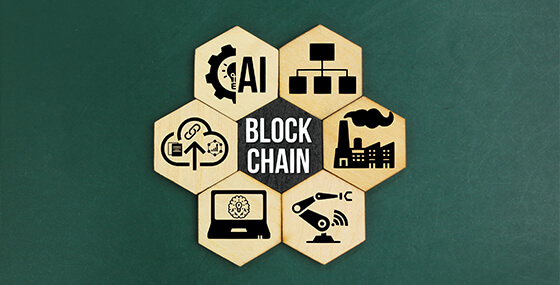 SPEAKERS
SPEAKERS
 TOPICS
TOPICS
Cryptocurrencies and supply chain management systems rely on blockchain technology. Does this technology impact the environment in any way? Read on to find out.

Have you ever heard of Bitcoin or any other cryptocurrency?
If you have, then know that these systems wouldn’t exist without blockchain technology.
Blockchain has become the sole reason people became crypto millionaires overnight. This decentralized ledger guarantees security and anonymity by recording transactions over a computer network.
It groups all exchanges into blocks interlinking on cryptographic hashes that are impossible to replicate. Buying or transacting crypto adds more blocks as Proof of Work (PoW) or Proof of Stake (PoS). These proofs ensure all transfers remain unaltered, keeping the network of exchanges secure. It eliminates centralized control, which can sometimes be compromised.
Blockchain technology isn’t exclusive to cryptocurrency only, it's also in other industries. Its application also extends to real estate, healthcare, and supply chain management.
But hold on a minute, does it impact the environment in any way? Is there a blockchain and environmental link?
Let’s find out.
Blockchain’s environmental impact is through energy transmission, transparency, and sustainability—a burden and two benefits.
Creating and running a blockchain relies on immense energy, especially during transaction verification. The computer network uses significant computing power, resulting in high power bills. Not to mention the heat these computers produce since they operate around the clock!
If the power source is fossil fuels, this affects the environment due to greenhouse emissions. If greenhouse emissions influence negative climate change.
On the brighter side of things, blockchain promotes sustainability and transparency.
Here is the blockchain effect on the environment on sustainability and transparency:

Knowing blockchain’s positive and negative environmental impacts could enlighten the need for changes. This section focuses on how to make it better for the planet. The world needs such a trustworthy network, so we must find solutions to curb the adverse environmental effects.
How?
The following are some initiatives.
Remember we mentioned PoW and PoS?
Of the two, Proof of Stake or PoS is more energy efficient. It replaces the energy-hungry PoW. Instead of transactions always being accessible, users lock them up for transaction verification, reducing energy expenditure.
The new consensus also introduces Proof of Authority (PoA) and Delegated Proof of Stake (DPoS) to further reduce energy usage. These two depend on verified validators or delegates to reduce energy consumption and greenhouse emissions.
All blockchain stakeholders can work toward refining the system’s protocols to minimize energy consumption per transaction. Using energy-efficient devices could also help reduce energy consumption and heat production.
Transacting a single Bitcoin uses approximately 1,719.51 kilowatt-hours (kWh). This energy is equivalent to powering an average American home for 59 days!
Promoting efficiency aims to reduce this power usage.
Another initiative to reduce the energy blockchain impact on the environment is switching to renewables. Blockchain projects can incentivize miners to use green energy — wind, solar, and hydropower. Such a switch reduces the overreliance on fossil fuels, lowering carbon footprints.
Another smart way is to invest in carbon offsets. This is where blockchain projects compensate for all the energy they use. They can do so by supporting other projects that reduce greenhouse gas emissions, like tree planting.
Knowledge is power, even regarding the impact of blockchain on the environment. When people become aware of the implications, they select eco-friendly options. Blockchain speakers can encourage people to use sustainability-supporting renewable energy blockchains.
Stakeholders, like governments, could offer incentives for blockchains that promote sustainability. Additional regulations could promote energy-efficient practices that encourage the adoption of greener alternatives.

Regardless of your position, the parties involved in this change are you and me.
The following is the breakdown of how each party can improve the blockchain effect on the environment.
Blockchain is a powerful tool. It anchors transparency, cost-efficiency, and security for transactions and material tracking. No one can replicate the system or use it for malicious purposes.
But with great power comes great responsibility. In this case, it’s to protect the planet from carbon emissions and the greenhouse effect. Thankfully, now you have actionable tips to ensure we collectively reduce the impact of blockchain on the environment.
This collective measure is where developers, validators, minors, users, and governments collaborate. If we all work towards a greener blockchain technology, we save the planet from a faster demise.
Getting blockchain speakers to speak at any gathering could help spread this message.
